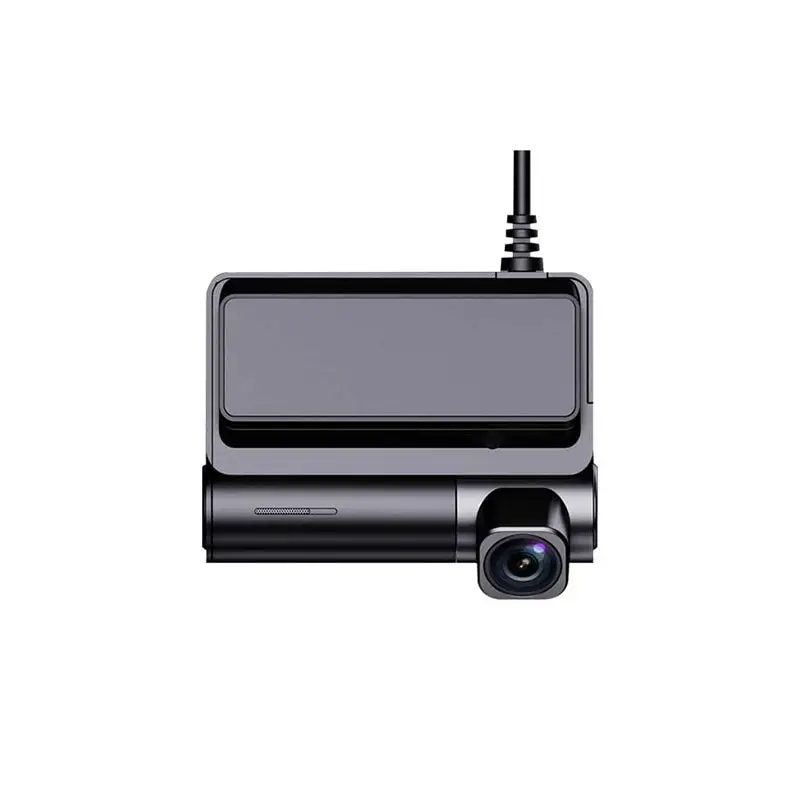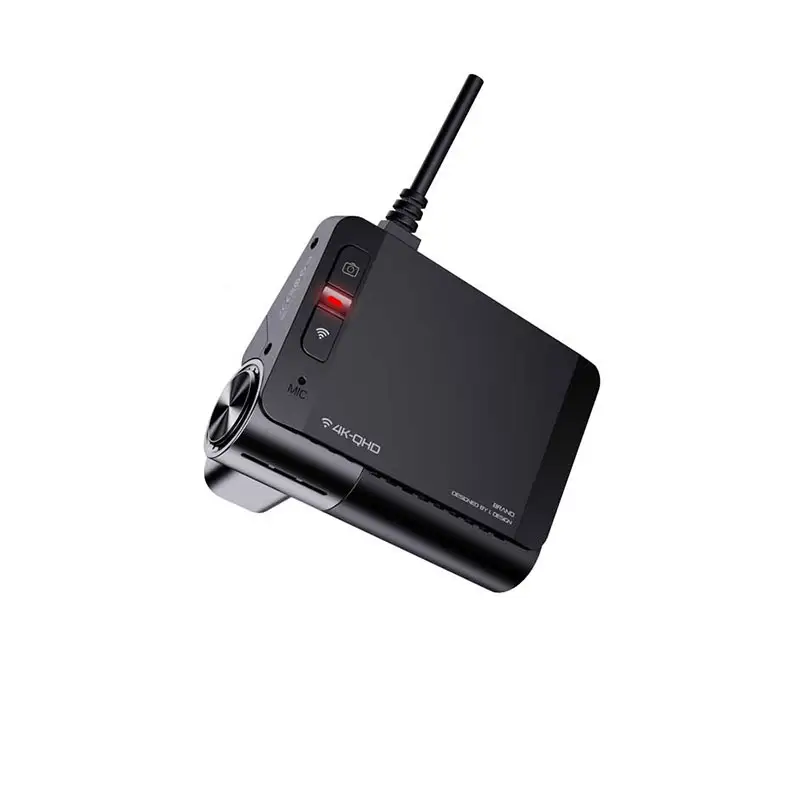Turvalisuse võimaluste laiendamine WiFi-st kaugemale
Aruka turvalisuse lahenduste areng on muutnud inimeste ja ettevõtete keskkonna jälgimise viisi. Üks olulisemaid edusamme selles valdkonnas on 4G-kaamerate väljatöötamine. Need seadmed eristavad end, sest nende toimimiseks ei ole vaja traditsioonilisi WiFi-ühendusi. Selle asemel kasutavad nad mobiilsidevõrke andmete edastamiseks ja reaalajas jälgimiseks peaaegu igast asukohast. Kuna nõue paindliku ja mobiilse seire järele suureneb, 4G kaameratele on kiiresti muutumas olulisteks vahenditeks nii isiklikele kui ka professionaalsetele turva seadmetele.
4G kaamerate tuumfunktsionaalsus
Mobiilivõrgu ühenduvus
4G kaameratele kasutavad SIM-kaarte, mis on sarnased neile, mida leidub nutitelefonides. Üks kord paigaldatuna ühenduvad need kaamerad mobiilsideoperaatorite pakutavate 4G LTE võrkudega. See ühenduvus võimaldab neil edastada otseseid videoid, saata teateid ja salvestada pilte pilve, ilma et sõltuksid fikseeritud internetiinfrastruktuurist. See teeb neist ideaalseks lahenduseks maapiirkondades, eesmärkides või mobiilsetes keskkondades, kus WiFi ligipääs on piiratud või puudub täiesti.
Iseseisev töö ja energiasäästlikkus
4G kaamerate oluline omadus on nende sõltumatus kõikvooluvõrgust. Paljudel mudelitel on sisseehitatud laetavad aku või päikesepaneelid, mis võimaldavad neil töötada ilma püsiva elektrivarustuseta. See mobiilsus võimaldab kasutajatel paigaldada kaameaid sõidukitesse, ehitusplatsidele, talnikele või isegi matkarajadele. Kombinatsioonis mobiilivõrgu võimega tagab see pideva töö sõltumata asukohast.
Põhikomponendid, mis võimaldavad 4G ühenduvust
Integreeritud moodsid ja antennid
Mobiilivõrgu kaudu suhtlemiseks sisaldavad 4G kaamerad integreeritud moodsisid ja antenne. Need komponendid võimaldavad kõrge resolutsiooniga video ja andmete edastamist LTE sagedusriba kaudu. Mõned täiustatud mudelid toetavad isegi kahe sagedusriba võrku või vahetavad automaatselt operaatorite vahel, et tagada stabiilne ühendus muutuvas signaalis.
SIM-kaardi ühilduvus ja andmekavandid
SIM-kaartide kasutamine on 4G kaamerate toimimise keskne osa. Enamik seadmeid on lukust vabastatud, mis tähendab, et neid saab kasutada erinevate operaatoritega. Kasutajal tuleb valida andmekava, mis sobib kaamera andmesidevajadustele. Kavad sõltuvad tavaliselt video üleslaadimise resolutsioonist ja sagedusest. Kaamer, mis salvestab 1080p või 4K resolutsioonis, nõuab rohkem andmeid kui standardse resolutsiooniga kaamer.
Eelised traditsiooniliste WiFi-kaamerate ees
Laiemad paigaldusvõimalused
4G kaamerate üks kõige veenvamaid eeliseid on nende võime toimida kõikjal, kus on mobiilivõrgu katvus. See on eriti kasulik välijuhtimiseks metsades, põllumajandusvaldkondades või transporditeedel. Traditsioonilised WiFi-kaamerad on piiratud aladega, kus on stabiilne internetiühendus, mis piirab nende kasutatavust.
Kiiremad ja usaldusväärsemad hoiatused
Kuna 4G kaamerad mööduvad kohalikest võrkudest, saavad nad saata hoiatusi otse SMS-i, push-teate või e-kirjaga minimaalse viivitusega. Selline andmete otsene edastamine tagab ajaliku reaktsiooni turvalisuse sündmustele, isegi eriolukordades. Paljudel juhtudel on 4G ühenduvus usaldusväärsem kui avalikud WiFi-võrgud, millel võib tekkida ülekoondu või häired.
4G kaamerate tüüpilised kasutusjuhud
Mobiilne turvalisus sõidukitele ja transpordivahenditele
Põhimõttelised ja sõidukite omanikud saavad paigaldada 4G kaameraid reaalajas jälgimise ja videovalveks. Need kaamrad salvestavad tegevust sõidukite sees ja ümber need, salvestavad juhtimise käitumist ning saadavad kohe teated õnnetuste või murdvandenõude korral. Need aitavad vähendada vastutust ja tagada tõendusmaterjali kindlustusnõuete jaoks.
Valveteenused võrguühenduseta asukohtadele
Talud, eraldised maja ja ehitusplatsid saavad suurel määral kasuks 4G kaameraid. Neis piirkondades puudub sageli traatide infrastruktuur, mistõttu on rakendatavad ainult mobiilivõrguga ühendatavad kaamrad. Kasutajad saavad jälgida karjamaailma, jälgida seadmete kasutamist ja valvata töömeeskonda ilma kohapeal viibimata.

Pilvemälu ja kaugpääs
Sujuv integreerimine pilvplatvormidega
Enamik 4G kaameraid on varustatud pilvemälu võimalusega. See võimaldab videoandmete turvalist salvestamist kohapeal väljaspool, vähendades andmete kadumise ohtu varguse või kaamera kahjustuste tõttu. Kasutajad saavad pildivaatele pääseda mobiilirakenduste või veebipordali kaudu igal ajal, kõikjal maailmas.
DVR-i või NVR-süsteemide vajadus puudub
Vanemate jälgimisseadmetega, mis nõuavad digitaalsete videosalvestite (DVR) või võrguvideosalvestite (NVR) kasutamist, on 4G kaamerad eest kõrvaldatud raskevaralise varustuse vajadus. Kogu salvestus salvestatakse pilve või paigaldatud SD-kaartidele. See muudab need odavamaks, vähe hooldust vajavaks ja kõrgelt laiendatavaks.
Pideva töö tagavad toitevarused
Päikesepaneelide laadimisvõimalused
Paljudel 4G kaameratel on paigaldatud päikesepaneelid, mis võimaldavad neil jätkata tööd ka võrguühendusest sõltumatult. Need päikeseenergia võimalused on eriti kasulikud põllumajanduses, parkides ja eemal asuvates jälgimiskohtades, kus tavaline laadimine on ebasobiv. Päikeseenergiaga laetavad 4G kaamrad võivad töötada kuidigi ilma inimese sekkumiseta.
Aku energiasäästlikkus ja varuakuvõimalused
Kaasaegsed 4G kaamrad on loodud energiasäästlikkuseks. Need lähevad sageli ooterežiimi, kui liikumist ei tuvastata, ja aktiveeruvad ainult siis, kui see on vajalik. Varuakud tagavad pideva jälgimise ka pilveselgetel päevadel või elektrikatkestustel, mis muudab need väga usaldusväärselt.
Targa jälgimise täiustamine AI-ga
Arukas liikumise tuvastamine
Edasijõudnud 4G kaamerad integreerivad kunstlikku intelligentsi liikumise analüüsimiseks ja inimeste, loomade ja sõidukite eristamiseks. See vähendab valesid häiresid ja parandab täpsust. Sellised funktsioonid on olulised kohtades, kus liigsed teated võivad muutuda segavaks.
Targad teated ja analüütika
Tarkvarafunktsioonid, nagu näonägu äratundmine, joone ületamise tuvastamine ja viibimise teavitused, pakuvad täiustatud analüütikat. Need tööriistad aitavad kasutajatel tuvastada mustreid, parandada ohutusprotokolle ja otsustavalt reageerida kahtlase käitumise korral. AI-ga täiustatud 4G-kaamerad sulgevad kiiresti kaugust tarbijatele ja ettevõtetele mõeldud jälgimisseadmete vahel.
Laiendatavus ja kanduvuse eelised
Hõlpsasti laiendatav tehnoloogia mitmes asukohas
Kuna 4G kaamerad ei sõltu kesksest võrgust, on süsteemi laiendamine lihtne – piisab lihtsalt uue seadme paigaldamisest. Kas tegemist on mitme asukohaga ettevõtmisega või koduse turvavõrgu laiendamisega, saab kasutajad lisada uusi kaamereid ilma keskse jaamata või WiFi-routert ümber seadistamata.
Ümberasutus ilma keerukusteta
Need kaamerad on ideaalsed ajutiseks paigaldamiseks. Näiteks saavad sündmuste korraldajad kasutada rahvahulgast jälgimiseks 4G-kaamerasid ja lihtsasti ümber paigutada need järgmisel päeval teisele toole. Sellist paindlikkust pole võimalik saavutada fikseeritud asukohaga turvamise süsteemidega.
Ühilduvus nutika KODU Ökosüsteemidega
Integreerimine hääljuhtimisega ja rakendustega
Paljud 4G-kaamerad on ühilduvad hääljuhtimise platvormidega, nagu Amazon Alexa või Google Assistant. Kasutajad saavad anda häälkäske, et pääseda otsesele ülekandele, seadistusi muuta või vaadata salvestusi. Nutikate kodu rakendustega integreerimine muudab igapäevakasutuse sujuvaks ja intuitiivseks.
Sünkroonimine sensorite ja alarmisüsteemidega
Mõned 4G-kaamerad saab seostada ukse/akna sensoritega, suitsutunnetitega ja alarmisüsteemidega. See integreeritud lähenemine pakub terviklikku turvajuhimist. Kui sensor aktiveeritakse, saab kaamer automaatselt alustada salvestamist ja teatada kasutajale.
Levila probleemide ületamine
Signaali tugevus ja antenni paigutus
Kuigi 4G kaamerad sõltuvad mobiilivõrgust, peavad kasutajad siiski tagama tugeva signaali optimaalse toimimise tagamiseks. Kaamera paigutamine akna lähedale või välistehaste kasutamine võib parandada signaali. Mõned seadmed sisaldavad signaali tugevuse mõõteseadet, mis aitavad seadistamisel.
Võrgukihistuse vältimine
Videote sujuva voogedastuse tagamiseks peaksid kasutajad valima operaatoreid ja andmekavasid, mis pakuvad stabiilset kiirust ja madalat viivitust. Piirkondades, kus võrgu kasutus on kõrge, võib olla vajalik valida vähem kihistunud sagedusriba või vahetada operaatoreid.
Reaalse maailma stsenaariumid ja paigaldamise nõuanded
Ajutine sündmusejälgimine
Välisõu peol või spordisündmuste ajal võib 4G kaamerad kiiresti paigaldada, et jälgida sissepääsu, reguleerida rahvahulka ja salvestada juhtumeid. Nende võime toimida iseseisvalt teeb neist ideaalse valiku ajutiste paigalduste jaoks, kus jalutusliiklus on suur.
Hädaolukordade ja katastroofide korral
Kriisiolekutes, näiteks tulekahjude, üleujutuste või kodusõjaliste rahutuste korral loodvad esimesena kohale jõudvad meeskonnad tingimustele hinnata ja meeskonna ohutuse tagamiseks 4G kaameratele. Kaamerad tagavad otsest pildi isegi siis, kui infrastruktuur on kahjustatud, mistõttu on need väärtuslikud vahendid hädaolukordade planeerimiseks ja operatsioonideks.
Kulutõhusus ja pikaajaline väärtus
Paigalduskulude kõrvaldamine
Juhtmetega süsteemidega võrreldes, mis nõuavad boorimist, kaablitamist ja võrgu seadistamist, on 4G kaamerad sageli lihtsalt kasutatavad. See säästab kasutajatele oluliselt paigaldusaja ja kulutusi, eriti keskkondades, kuhu on raske ligipääs.
Kohandatavad tellimuskavad
Paljud teenusepakkujad pakuvad paindlikke andmekavasid, mis on sobitatud erinevate kasutustasetega. Kasutajad saavad valida kavad, mis vastavad nende jälgimisvajadustele ja eelarvele. Selline tasuta-mida-kasutad mudel võimaldab paremat kontrolli üle pikemaajaliste toimimiskulude.
Tavaliselt esinevad küsimused
Kas 4G kaamerad suudavad toimida ilma internetiühenduseta?
Jah, 4G kaamerad kasutavad andmete edastamiseks mobiilivõrku, mis kõrvaldab traditsiooniliste internetiühenduste (nt WiFi või Ethernet) vajaduse.
Millist tüüpi SIM-kaart on vajalik 4G kaamerasse?
Enamikul 4G kaameratel on vajalik standardne või nano SIM-kaart aktiivse andmekaviga. On oluline kontrollida, kas kaamer on ühilduv teie operaatoriga.
Kui palju andmeid 4G kaamer kasutab?
Andmekasutus sõltub teguritest, nagu resolutsioon, salvestamise sagedus ja liikumisavastus. Keskmiselt võib pidev 1080p salvestamine tarbida päevas mitme gigabaidi.
Kas 4G kaamerad on sobivad siseruumides kasutamiseks?
Jah, 4G kaamerad töötavad hästi siseruumides ja on ideaalsed alad, kus WiFi signaalid on nõrgad või puuduvad, näiteks garaažid, keldrid või eesmised hooned.
Sisukord
- Turvalisuse võimaluste laiendamine WiFi-st kaugemale
- 4G kaamerate tuumfunktsionaalsus
- Põhikomponendid, mis võimaldavad 4G ühenduvust
- Eelised traditsiooniliste WiFi-kaamerate ees
- 4G kaamerate tüüpilised kasutusjuhud
- Pilvemälu ja kaugpääs
- Pideva töö tagavad toitevarused
- Targa jälgimise täiustamine AI-ga
- Laiendatavus ja kanduvuse eelised
- Ühilduvus nutika KODU Ökosüsteemidega
- Levila probleemide ületamine
- Reaalse maailma stsenaariumid ja paigaldamise nõuanded
- Kulutõhusus ja pikaajaline väärtus
- Tavaliselt esinevad küsimused



